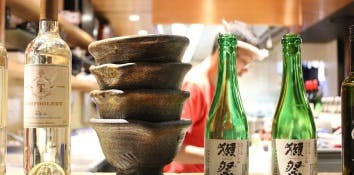
Kyoto Travel Guide
In this Kyoto travel guide we'll be sharing all the essential information you'll need to use the city's transport, some insight into the epic food scene and some language tips, plus a rundown of our best things to do in Kyoto.
What you'll find in this guide:
Top things to do in Kyoto
Practical Information
Facts about Kyoto
Getting to Kyoto
Getting around Kyoto
Kyoto attractions
What to eat in Kyoto
You can find more great video content on our YouTube channel
Holiday Extras Travel Guides
GMT +9
Yen JPY
Japanese
Type A & B
15 Hours
Practical Info
Culture and etiquette
Religion
The most common religions in Japan are Buddhism and Shintoism
Tipping
Do you need tip in Kyoto? Tipping isn't customary in Japan and can even be considered rude. There are rare situations where tipping may be expected but for the most but it's safer not to.
Smoking
Smoking is banned in most indoor public spaces and public transport, with some exceptions. It's also not allowed on public streets in busy districts – though you can find designated smoking areas.
Language 101
Japanese is the official language, though English is spoken in some parts of Kyoto and other big cities. It might be worthwile to learn a little Japanese in case you need it while you're there.
Hello - Kon'nichiwa
How are you? - O-genki desu ka
Yes - Hai
No - Iie
What's your name? - O-namae wa nan desu ka
My name is - Watashi no namae [name] desu
Please - Onegaishimasu
Thank you - Arigato gozaimasu
How much is it? - Ikura desu ka?
Where is? - Wa doko desu ka?
Numbers:
- One - Ichi
- Two - Ni
- Three - San
- Four - Shi, yon
- Five - Go
Goodbye - Sayonara
Jabs, visas and other advice
For up-to-date advice on jabs, visas and other foreign advice, we recommend following the government's website
Emergency numbers
110 for police. 119 for fire or ambulance.
Facts about Kyoto
The ancient city of Kyoto lies around 280 miles west of it's neon counterpart, Tokyo, and roughly 25 miles north of Osaka.
For well over a thousand years the city of Kyoto was home to the Japanese Imperial Family, and therefore the nation's capital city until 1868. It was at this time that the Emperor moved east to Edo, the home of the Shogunate and an already well-established port of trade, who renamed the city, Tokyo.
It's fair to say that the traditional and historic Kyoto is in stark contrast to the hustle and bustle of Tokyo. Here, arts and culture have had a huge influence on the city, which has helped shaped the beautiful and peaceful Kyoto that stands today.
Getting to Kyoto
Flights from the UK will arrive at Osaka Kansai International airport 60 miles south of Kyoto. From here you can take one of Japan's super-efficient trains into the city or hop on the Airport Limousine bus.
The JR Haruka Express takes 75 minutes to Kyoto Station, stopping at Shin-Osaka along the way.
The Limousine Bus departs from the first floor of both terminals and takes 90 minutes to reach Kyoto Station, after which it makes several further stops across town. If one of these stops is near your hotel, the bus may end up quicker than the train, so check their online timetable before planning your journey.
If you hold a British passport you will not need a visa to enter Japan and can stay for up to 90 days as a tourist. You'll need to fill out a landing card when you arrive and may need proof that your departure flight is booked.
Getting around Kyoto
Kyoto does not have an extensive subway network. Yes, there is a metro, but it generally works out quicker to get the bus and you get to really see the city.

Most bus services run between 7am and 9pm, with some offering earlier and later routes, what's more, most have announcements in English for tourists.
Kyoto is an old city and the subway system isn't nearly as convenient as hopping on a bus, or even walking and cycling
There are two metro lines in Kyoto: the Karasuma line that runs north to south, and the Tozai line which runs east to west.
Top
Japan ranks 33rd on the Good Trip Index
This score is calculated based on Sustainability, Human Rights, Women's Rights, Press Freedom, Quality of Life, LGBTQI+ Rights and Animal welfare
Find out moreKyoto's top attractions
As one of Japan's oldest cities, it's no surprise that there's plenty of things to do in Kyoto, and no trip here would be complete without visiting these hotspots…
Gion
Top of the list if Kyoto's old town, Gion. This is the place to go for traditional Japan, and our personal favourite. If you're a fan of Memoirs of a Geisha and all things historical and cultural, and you're also an Instagram aficionado, this is an absolute must-visit, though bear mind that the town is very popular and can get rather busy.

Kinkaku-ji
Kinkaku-ji, or the Golden Pavilion, is you guessed it, covered in gold. According to local custom the gold plating will purify negative energy. The temple itself is stunning although there isn't a whole lot else to do here once you've got the obligatory photo. My top tip for visiting this popular tourist attraction: go early to avoid the crowds and then move on to my personal favourite, Ginkaku-ji, or the Silver Temple…

Ginkaku-ji
Now this is what comes to mind when thinking of traditional Japanese temples. A gentle, quiet and relaxing garden with some beautiful buildings. In English, Ginkaku-ji translates to Silver Pavilion, though unlike it's golden counterpart never got plated with precious metal. In all honesty, it's just as pretty and well-worth a wander regardless.
Fushimi Inari
Next up is the Fushimi Inari shrine and its thousands of orange torii. This legendary site is one of Japan's most famous and most photographed.
The gates line the paths up the Inari mountain and if you can get ahead of the crowds the walk itself a beautifully serene experience. Just watch out for the bugs! The walk to the top will take a couple of hours, but the views over the city make it well worth it in my opinion. Fushimi Inari is open 24 hours a day all year round and best of all, is free to enter!
The famous orange torii are packed most densely at the beginning of the trail and spread out the further you travel up the path to the shrine. Bear in mind that this walk involves trekking a small mountain, so have good footwear and plenty of water. You'll also be pleased to know that there are designated rest areas serving tea on your trek. All-in-all, expect to take a couple of hours to get to the top.

Arashiyama
Another must-see, if not for your Instagram feed, then to boost your zen is Arashiyama, the nearby famous bamboo grove.
The grove's open 24/7 and admission is free, though the best times to visit are during the afternoons, especially in summertime, because the grove isn't particularly well-lit and you want to make as much of the natural light. It's worth mentioning that along the way there are several temples and residences to stop and explore, like Tenryu-ji Temple, that do require a small entry fee.
TopWhat to eat in Kyoto
Cuisine in Kyoto is known for being refined, delicious and second only to Tokyo when it comes to quality, in fact the city of Kyoto has over 100 Michelin-star restaurants.
When it comes to food (and pretty much anything in Japan for that matter) the attention to detail and the care taken in preparation is unrivalled. The food on offer here is nothing short of spectacular and from high-end restaurants to street stalls or even ready-prepared meals from a 7-Eleven store, you will not be disappointed. Neither will you go hungry.

One Kyoto's many specialities is Kaiseki, which is Japanese haute cuisine. The meal itself consists of a set menu offering a simple, hand-crafted dish for each each course, of which there can be as many as 11. However, both style and substance play a huge part, with a focus on balancing flavours, colour and texture.
Kyoto is also famous for its tofu. There's also a strong Japanese Buddhist influence in the region making this city a great place to find vegetarian cuisine, like yudofu and shojin ryori.
Another speciality in Kyoto are sweets, specifically Kyo-wagashi – beautifully crafted confections in various shapes and colours, which genuinely are as sweet as they look.
Japanese dining etiquette
To make it easier, remember these important notes on Japanese etiquette when dining out in Japan:
- Shoes and slippers off
- Wet towels are for your hands, not your face
- It's polite to wait for all dishes to arrive before tucking in
- Pick up small bowls and lean into bigger ones
- When finished, leave dishes how they arrived (lids on etc)
- It's polite to serve each other alcohol, rather than yourself and always sip before a refill

























